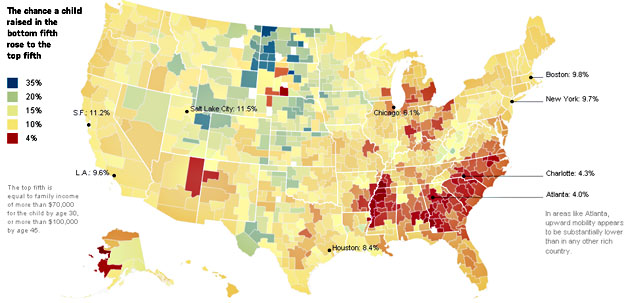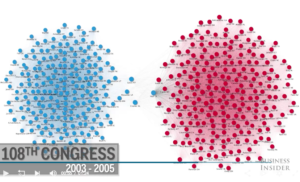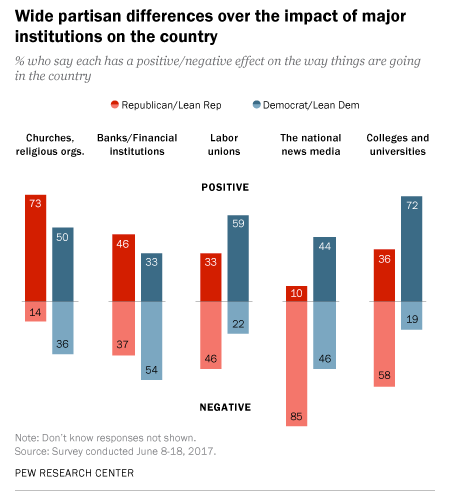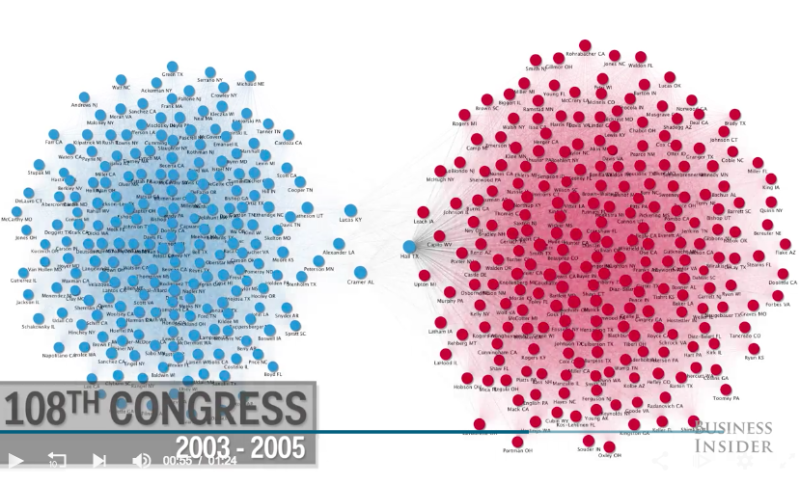While this space is used exclusively for matters related to education, we increasingly must find and deal with the Venn overlap of social, economic, and political trends that both reflect and impact the ecosystem of which education is just one element. What we teach/learn, and how we teach/learn MUST recognize the reality of the world beyond the classroom walls. So I am re-sharing three profound indicators of that reality in the hope that these, and others, will stimulate conversations at your school and within your community, because if we don’t address these powerful tensions in our world, it really is not going to matter how well our students do on standardized tests:
1. The economic circumstances into which a child is born is the single largest factor of potential upward economic mobility. Of course, individuals may overcome these disadvantages, but much more so than grit, resilience, or hard work, the zip code of your birth is most likely to dictate your opportunity to achieve the American dream.

2. Our national government has become increasingly polarized, with very little bi-partisan cooperation. This divide has been increasing since the end of World War II, but dramatically so in the last 20 years. (This is a remarkable 60-second video representation. It would make GREAT viewing and discussion for any high school history or civics class, let alone a faculty meeting!) There is almost no center remaining in a constitutional system that is fundamentally based on the idea of compromise. The dominant political parties at the national level almost exclusively represent the 30-40% of Americans on the far right and far left of the political spectrum, and almost none represent the 60-70% of Americans who believe in more centrist positions. Education is about preparing students to make up their own minds, not indoctrinating them in an existing social-political milieu This becomes increasingly problematic in a bi-polar world.

3. Higher education has been one of the most powerful engines of growth and global American leadership over at least the last century. At a time when American leadership in business and global political influence is falling, American colleges and universities remain the global standard. Yet a very large minority of Americans believe that our colleges and universities have a negative impact on our country, perpetuating an historic divide between generally conservative parts of the country that are suspect of intellectual “elites”, and generally more liberal regions where academic intellectualism is prized. Where parents do not find value in centers of higher education, what value do they find in paying college tuition? Why will states in those regions continue to fund public colleges and universities? And how will this further exacerbate the “zip code” problem, which is heavily concentrated in the generally conservative South?

Most Americans do not fall into the extremes that are pulling our country apart. The middle 60% of Americans tend to be somewhat socially progressive and somewhat fiscally pragmatic. There is a “center” that is lacking representation, and that, given a voice, will support education systems that prepare our children to manage an increasingly complex world. Educators should take a lead in helping re-build this “center” of America. Lacking such a re-build, our country is in real trouble.












test tetett etete